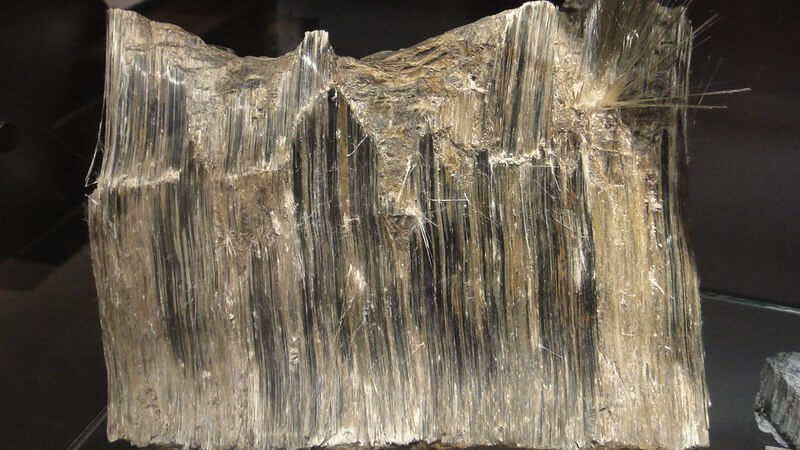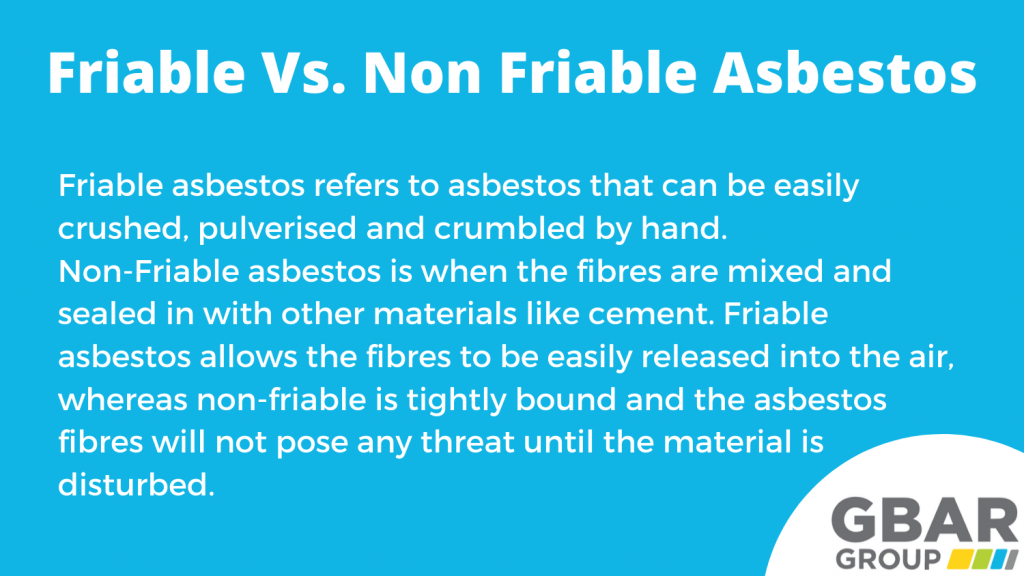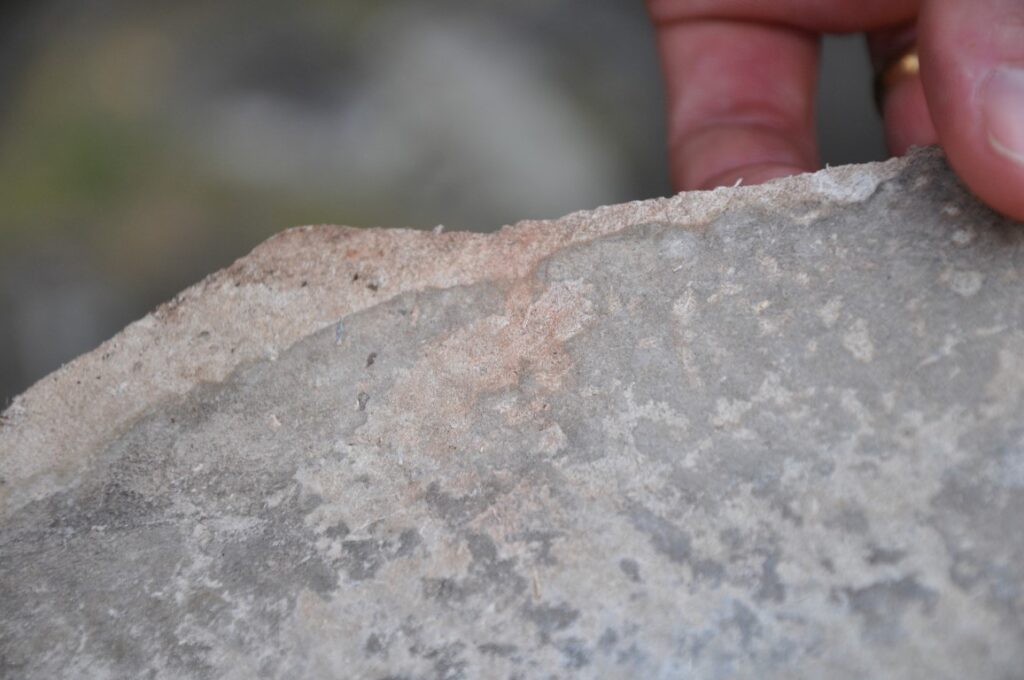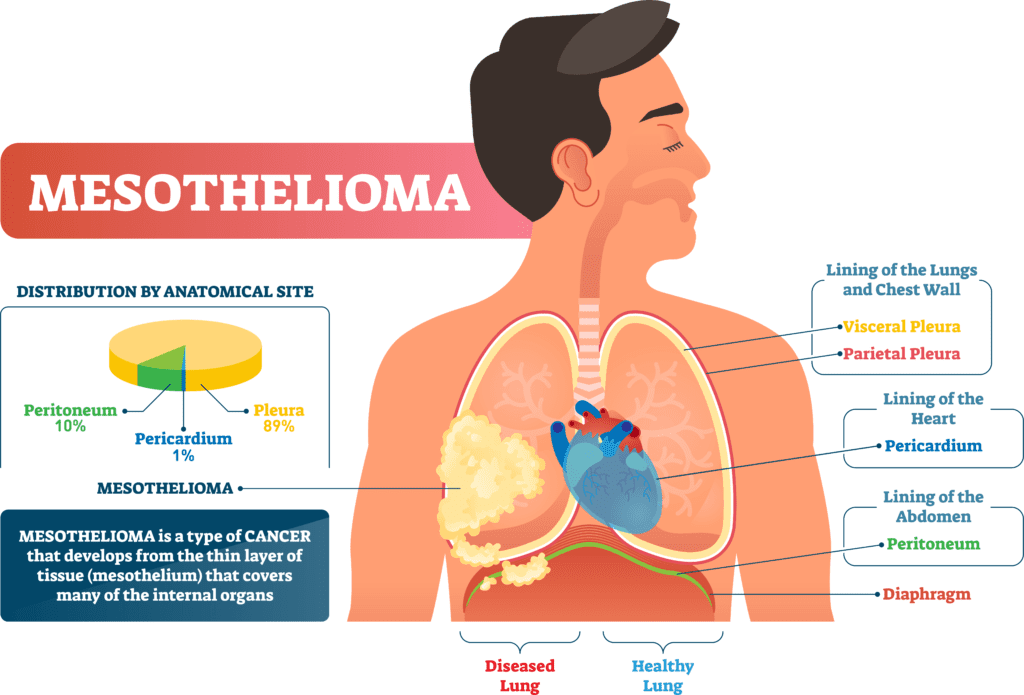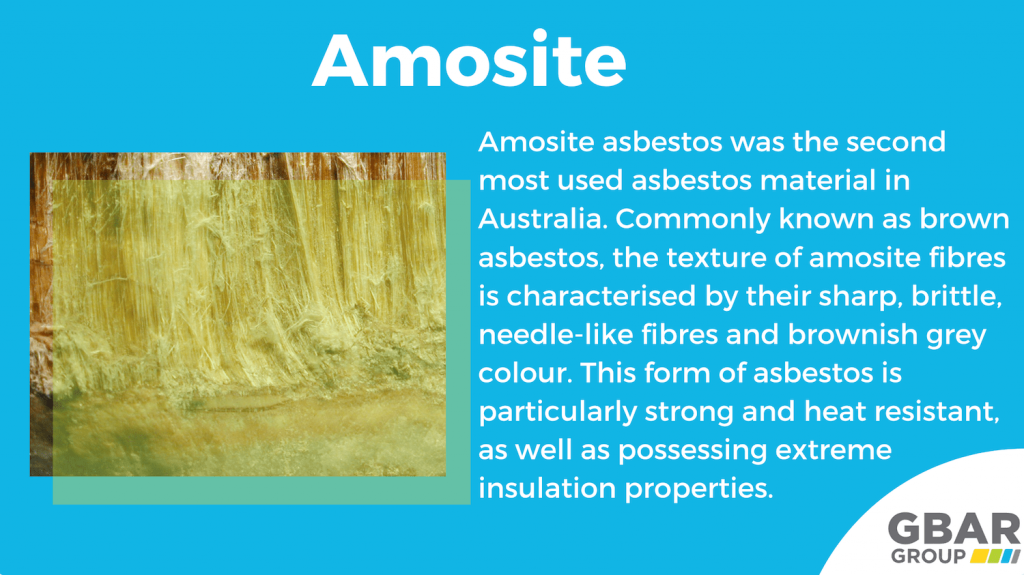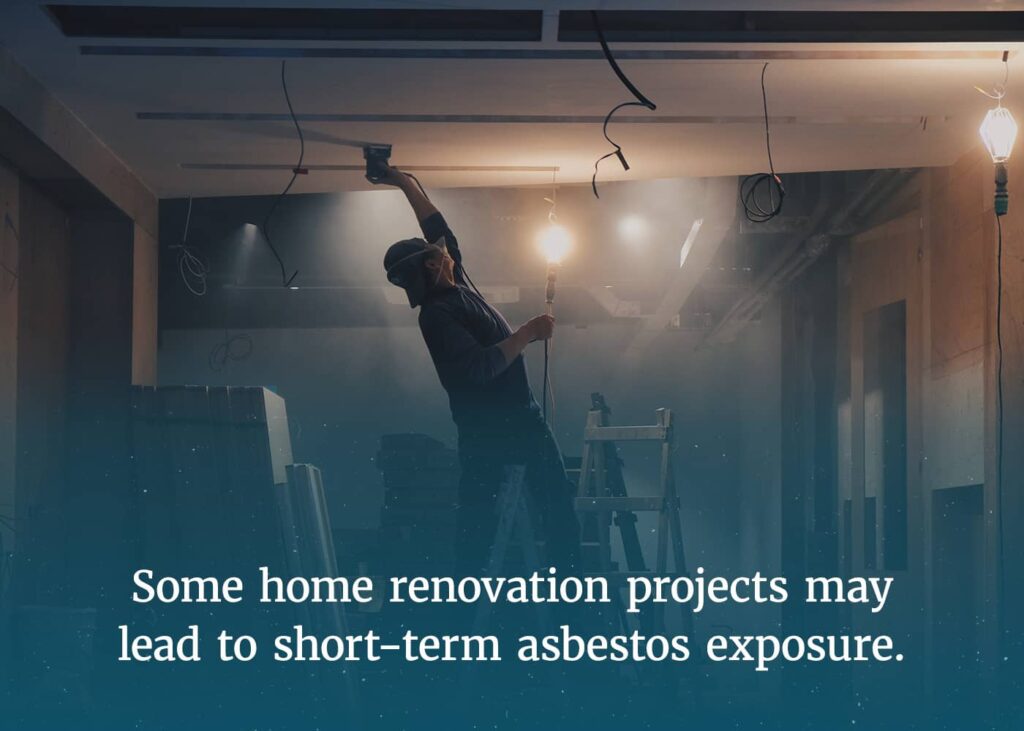Asbestos is a mineral once widely used in construction and manufacturing due to its heat resistance and durability. However, its long-term health risks have now become well-known, causing it to be banned in many countries. Despite this, it’s essential to understand that asbestos isn’t a singular substance, but rather a family of minerals. Each type of asbestos varies in its chemical composition, appearance, and potential health hazards. In this article, you will discover an enlightening exploration of the different types of asbestos, shedding light on their characteristics and the importance of avoiding exposure to them.
Types of Asbestos
Asbestos is a naturally occurring mineral fiber that has been widely used in various industries due to its heat resistance, strength, and insulating properties. However, it is important to understand that not all asbestos fibers are the same. There are several different types of asbestos, each with its own characteristics, usage, and potential health risks. In this article, we will explore the various types of asbestos in detail to provide you with a comprehensive understanding of this mineral and its associated risks.
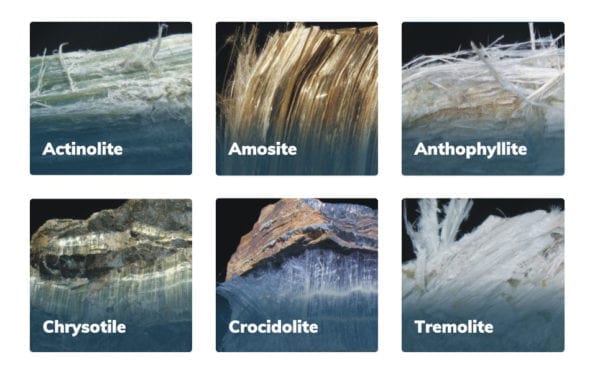

Chrysotile
Chrysotile, also known as white asbestos, is the most commonly used type of asbestos. It is a serpentine mineral with long, curly fibers that can be easily spun and woven into fabrics. Chrysotile asbestos is resistant to heat, chemicals, and electricity, making it a popular choice for a wide range of applications.
Characteristics
Chrysotile fibers are flexible and can withstand high temperatures without significant damage. They have a whitish-gray color and are typically shorter and curved in shape, resembling the tendrils of a plant. These fibers are not as brittle as other types of asbestos, making them easier to manipulate.
Usage
Chrysotile asbestos has been widely used in the manufacturing of building materials such as cement, roofing shingles, and insulating materials. It has also been used in friction products like brake pads and gaskets, as well as in textiles, plastics, and coatings.
Health Risks
Exposure to chrysotile asbestos can pose serious health risks. Inhalation of chrysotile fibers can lead to lung diseases such as asbestosis, lung cancer, and mesothelioma. It is important to take proper precautions when working with or around chrysotile-containing materials to minimize the risk of exposure.
Amosite
Amosite, also known as brown asbestos, is another commonly used form of asbestos. It is a member of the amphibole group of asbestos minerals and consists of straight, needle-like fibers.
Characteristics
Amosite fibers are typically brown in color and have a straight and brittle nature. They are known for their high heat resistance and durability. Amosite fibers are longer and stiffer compared to chrysotile fibers, making them less flexible and more hazardous.
Usage
Amosite asbestos has been primarily used in construction materials, including insulation boards, ceiling tiles, and pipe insulation. It has also been used in thermal insulation products, electrical insulation, and as a fireproofing agent.
Health Risks
Similar to other types of asbestos, amosite poses significant health risks when inhaled. Prolonged exposure to amosite fibers can lead to various respiratory diseases, including asbestosis, lung cancer, and mesothelioma. It is crucial to handle amosite-containing materials with care and follow proper safety protocols to avoid exposure.
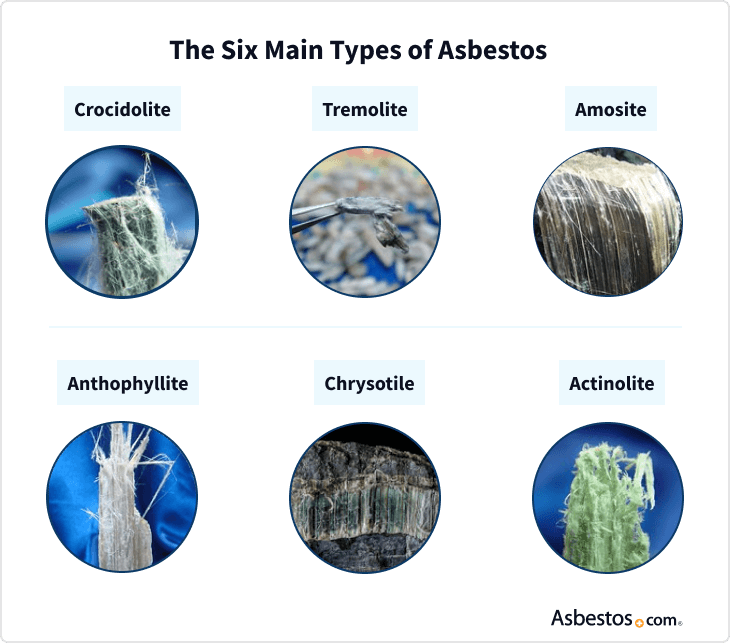

Crocidolite
Crocidolite, also known as blue asbestos, is a unique type of asbestos known for its blue color and needle-like structure. It is a member of the amphibole group of asbestos minerals.
Characteristics
Crocidolite fibers are incredibly thin, long, and sharp, resembling needles. They are typically blue in color, due to the presence of iron impurities. Crocidolite is considered to be the most hazardous form of asbestos due to its small fiber size and ability to easily penetrate tissues.
Usage
Crocidolite asbestos has been used primarily in products that required high-temperature resistance, such as steam engines, boilers, and spray-on coatings. It has also been used in the manufacturing of cement pipes and sheets, as well as in some types of insulation materials.
Health Risks
Inhalation of crocidolite fibers can have severe health consequences. Exposure to crocidolite asbestos is strongly associated with the development of mesothelioma, a rare and deadly form of cancer. It is also linked to other asbestos-related diseases, including lung cancer and asbestosis.
Tremolite
Tremolite is a rock-forming mineral that belongs to the amphibole group of asbestos minerals. It is often found in association with other types of asbestos, such as chrysotile and actinolite.
Characteristics
Tremolite fibers are typically white, gray, or greenish-white in color and have a straight and elongated structure. They are known for their high heat resistance and electrical insulation properties. Tremolite fibers can be easily broken down into thin, needle-like particles, which can easily become airborne and inhaled.
Usage
Tremolite asbestos has been used in various construction materials, including insulation products, cement sheets, and pipes. It has also been found in talc products, such as talcum powder, and has been associated with asbestos contamination in some cosmetic and personal care products.
Health Risks
Exposure to tremolite asbestos can lead to severe respiratory diseases, including mesothelioma and lung cancer. It is important to be cautious when working with or around products that may contain tremolite asbestos to avoid exposure and potential health risks.
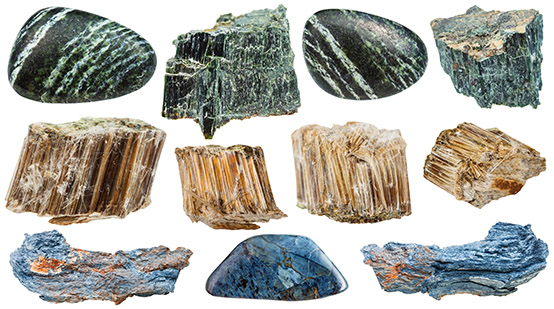

Actinolite
Actinolite is a mineral that falls under the amphibole group of asbestos minerals. It can occur in a fibrous or non-fibrous form.
Characteristics
Actinolite fibers can be white, gray, brown, or green in color and have a needle-like structure. Like other amphibole asbestos minerals, actinolite fibers are brittle and pose a higher risk of fiber penetration into the lung tissues.
Usage
Actinolite asbestos has been used in the manufacturing of various construction materials, including insulation products, cement, and tiles. It can also be found in soil and rocks in certain geological areas.
Health Risks
Inhalation of actinolite fibers can lead to serious respiratory illnesses, including lung cancer and mesothelioma. Long-term exposure to actinolite asbestos should be avoided to prevent the development of these diseases.
Anthophyllite
Anthophyllite is a lesser-known type of asbestos that is part of the amphibole group. It is the least commercially significant form of asbestos.
Characteristics
Anthophyllite fibers can be brown, gray, or green in color and have a brittle and needle-like structure. They are typically longer and less flexible than other forms of asbestos fibers.
Usage
Anthophyllite asbestos has been used in limited applications, primarily in the manufacturing of insulation products, cement, and tiles. It can also be found in certain geological formations and has been associated with asbestos contamination in vermiculite ore.
Health Risks
Exposure to anthophyllite asbestos can lead to respiratory problems, including lung cancer and mesothelioma. Although less commonly encountered compared to other types of asbestos, caution should still be exercised when working with or around anthophyllite-containing materials.
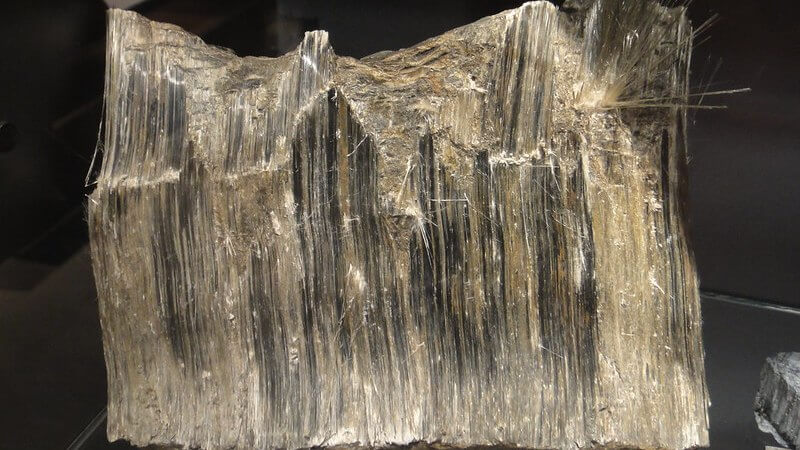

Libby Amphibole Group
The Libby amphibole group refers to a unique type of asbestos found in the Libby mine in Montana, United States. It is a combination of various asbestos minerals, including tremolite, actinolite, and richterite.
Characteristics
The Libby amphibole group asbestos fibers can vary in color, ranging from white to grayish-brown. They have a fibrous appearance and can be easily broken down into fine particles.
Usage
The Libby amphibole group asbestos was extensively used in a wide range of products, particularly vermiculite insulation. It has also been found in other construction materials and consumer products distributed across the United States.
Health Risks
Exposure to the Libby amphibole group asbestos has been associated with a significant increase in respiratory diseases, including lung cancer and mesothelioma. The unique composition of this asbestos type, combined with its widespread usage, has led to a high number of asbestos-related illnesses in the Libby area.
Non-commercial Asbestos
Apart from the commercially significant forms of asbestos, there are also non-commercial asbestos minerals that pose health risks if disturbed or encountered.
Definition
Non-commercial asbestos refers to asbestos minerals that have limited industrial or commercial value. These minerals are typically found in natural deposits or geological formations.
Occurrences
Non-commercial asbestos minerals can be found in various geological locations worldwide. While they may not be extensively used in industrial applications, they still have the potential to release asbestos fibers and pose health risks if disturbed or improperly handled.
Asbestos-like Minerals
In addition to the different types of asbestos, there are also minerals commonly known as asbestos-like minerals, which may share some similarities with asbestos but do not fall under the official definition of asbestos.
These minerals include materials such as erionite, winchite, and richterite. While they may not possess the same health risks as asbestos, they can still cause respiratory problems if inhaled in sufficient quantities.
Regulated Asbestos-Containing Materials (RACMs)
Regulated Asbestos-Containing Materials (RACMs) refers to any materials that contain more than 1% asbestos by weight. These materials are subject to various regulations and guidelines to ensure proper handling and disposal.
Definition
The definition of RACMs has been established by regulatory agencies to identify materials that pose a potential risk of asbestos exposure. These materials can include building materials, insulation products, and other consumer goods.
Examples
Examples of RACMs include asbestos-containing insulation, flooring materials, ceiling tiles, and pipe insulation. It is crucial to identify and handle these materials properly to prevent the release and inhalation of asbestos fibers.
Safety Measures
When working with RACMs, it is essential to follow proper safety measures to minimize the risk of asbestos exposure. This may include wearing personal protective equipment (PPE), employing safe work practices, and utilizing appropriate containment and removal methods.
In conclusion, understanding the different types of asbestos is crucial in recognizing potential health risks and adopting appropriate safety measures. Whether it is the widely used chrysotile asbestos or the highly hazardous crocidolite asbestos, all forms of asbestos present serious health concerns when proper precautions are not taken. By being informed and cautious, we can minimize the risks associated with asbestos and protect our health and well-being. Stay safe!

